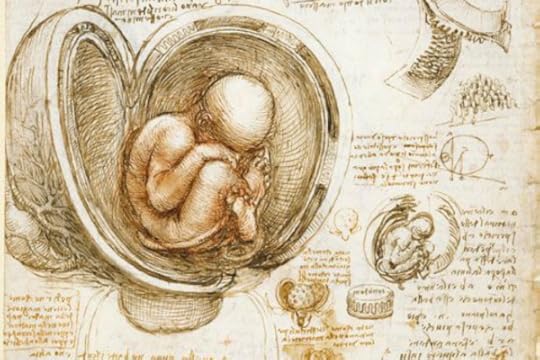Carl Zimmer's Blog, page 49
February 23, 2012
Parasite mind-control, ebooks, and killer flu: My first Google+ Hangout video
One of the most interesting features of Google's new social media service, Google+, is Google+ Hangout On Air. A group of people get onto G+ all at once, fire up their computers' cameras, and have a conversation. Google puts whoever is speaking at the moment on the main screen. You can join a hangout if it's public or if you have an invitation, and–coolest of all–it automatically records the conversation and throws it onto Youtube.
Right now only a few people have access to this service. I jealously watched fellow Discover blogger Phil Plait talk about exoplanets last month. (You can too.) And then I got invited to join the folks at the Singularity Hub for a hangout, too. It's up on Youtube, and you can also see it embedded here below. We talked about all sorts of things–from mind-controlling parasites to bird flu to using viruses to cure antibiotic-resistant bacteria to the future of ebooks and much more.
I deeply crave this technology. I used to participate in a primitive forerunner of this, known as Bloggingheads. I bowed out due to editorial differences, but I still think the basic system is an exciting medium. I ...

February 22, 2012
The Hive Mind Reader: My Smithsonian profile of Thomas Seeley
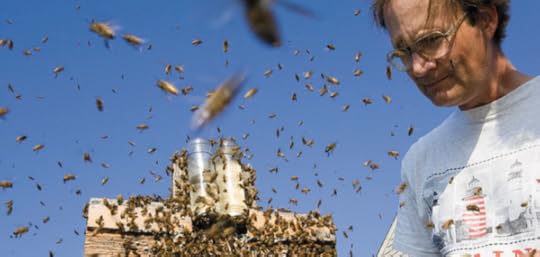
In the March issue of Smithsonian, I profile Thomas Seeley, a Cornell scientist who has spent forty years pondering how honeybees make up their collective minds. His discoveries reveal some striking parallels between honeybee swarms and our own brains. There are even some lessons we can learn from bees about how to run a democracy.
Reporting this story involved some of the weirdest experiences I've ever had, as the introduction to my piece illustrates:
On the front porch of an old Coast Guard station on Appledore Island, seven miles off the southern coast of Maine, Thomas Seeley and I sat next to 6,000 quietly buzzing bees. Seeley wore a giant pair of silver headphones over a beige baseball cap, a wild fringe of hair blowing out the back; next to him was a video camera mounted on a tripod. In his right hand, Seeley held a branch with a lapel microphone taped to the end. He was recording the honeybee swarm huddling inches away on a board nailed to the top of a post.
Seeley, a biologist from Cornell University, had cut a notch out of the center of ...

Brain Cuttings Meets the Woes of the Ebook Business
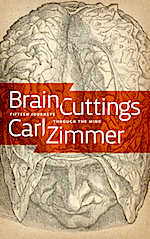
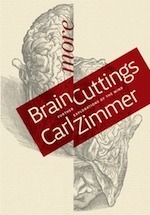 By weird coincidence, on the same day I announce the launch of an ebook review, I get to enjoy some of the harsh realities of the ebook business. Over the past year I've published two collections of my pieces about the brain, Brain Cuttings and More Brain Cuttings. I just found out that Amazon has decided, for now, not to sell them. (Here's some background.)
By weird coincidence, on the same day I announce the launch of an ebook review, I get to enjoy some of the harsh realities of the ebook business. Over the past year I've published two collections of my pieces about the brain, Brain Cuttings and More Brain Cuttings. I just found out that Amazon has decided, for now, not to sell them. (Here's some background.)
You still have lots of options for getting your hands on these ebooks.
Scott & Nix, the publisher, offers both titles in pdf and epub formats. (Brain Cuttings, More Brain Cuttings)
Barnes & Noble sells then for the Nook. (Brain Cuttings, More Brain Cuttings)
Apple sells it in them iBookstore. (Brain Cuttings, More Brain Cuttings)
Update: Publisher's Lunch has the details of the showdown between Amazon and Independent Publishers Group over Kindle titles.
February 21, 2012
Download the Universe: Deborah Blum reviews "The Elements"
It only makes sense that an accomplished writer on chemistry takes a look at a hugely successful ebook on chemistry. Here's Deborah Blum's review of Theodore Gray's "The Elements."

Introducing Download the Universe: A new science ebook review
 I'd like to draw your attention to a new project some colleagues and I have built: a science ebook review.
I'd like to draw your attention to a new project some colleagues and I have built: a science ebook review.
For over a year now, ebooks about science have been published at a remarkable clip, but there's been a serious gap in this growing ecosystem: a way for people who want to read new ebooks about science to find out about new projects. Because science ebooks are so new, they have a way of falling between the cracks. Conventional book reviews aren't very interested; blogs only sporadically pay attention.
At this year's Science Online conference, some colleagues and I decided that this was a problem easily solved. So we set out to solve it, with a new site: Download the Universe.
We are fifteen writers and scientists who want to explore this new form. On a regular basis, we'll be delivering new reviews of ebooks about technology, medicine, natural history, neuroscience, astronomy, and anything else that fits under the comfortably large rubric of science. We also define ebooks generously–everything from a plain-vanilla pdf on an author's web site to a Kindle Single to an elaborate iPad app. (We will not be ...

February 17, 2012
The hidden light: My new brain column in Discover
 We can see because neurons in our eyes take in visible light and relay electric signals to the brain. But some of those neurons detect light that we cannot actually see. In fact, people who lose all their other retinal cells except these neurons are blind. If you shine a light in their eyes and ask them to guess the color, however, they guess very well. It turns out these neurons feed this invisible light to many parts of the brain. In my latest column for Discover, I take a look at this hidden light. Check it out.
We can see because neurons in our eyes take in visible light and relay electric signals to the brain. But some of those neurons detect light that we cannot actually see. In fact, people who lose all their other retinal cells except these neurons are blind. If you shine a light in their eyes and ask them to guess the color, however, they guess very well. It turns out these neurons feed this invisible light to many parts of the brain. In my latest column for Discover, I take a look at this hidden light. Check it out.
February 16, 2012
Flies and booze: strictly for medicinal purposes
 One mission of the Loom is to champion unjustly neglected forms of life. And so I spend a lot of time blogging about the sinister powers of parasites. But I don't want to leave you with the impression that hosts are simply helpless bags of grub. Hosts have evolved defenses to ward off parasites, and those defenses can be just as baroque and marvelous as the adaptations of their parasites.
One mission of the Loom is to champion unjustly neglected forms of life. And so I spend a lot of time blogging about the sinister powers of parasites. But I don't want to leave you with the impression that hosts are simply helpless bags of grub. Hosts have evolved defenses to ward off parasites, and those defenses can be just as baroque and marvelous as the adaptations of their parasites.
And so let me point you to a story I've just written for the New York Times. If you think you've got it bad with parasites, with your cold viruses and stomach bugs, just think what it's like to be a fly like Drosophila melanogaster. Wasps land on you, inject eggs in your body, and turn you into an extra on the set of Aliens. It now turns out that these flies have a secret weapon. It's booze.
This was the very first article I've ever written where I was able to quote a scientist who said–without prompting or reading off a cue card: "The flies self-medicate by getting schnockered."
[Image: Photo by raysto - http://flic.kr/p/aoe5xF ...
February 15, 2012
How I Started the Iraq War (I Think)
For a lot of writers, there's no greater dream than to get onto the Colbert Report or the Daily Show.
This was not exactly how my dream was supposed to go:
The Daily Show with Jon Stewart
Now, as the author of a book about science tattoos and articles on topics including exploding whales, jumping fleas, zombie cockroaches, and the sex-crazed flashes of fireflies, I'll be the first to admit that I sometimes like writing about things that may seem–at first–to be pure diversion.
But my hope is that there's more to the stories than an intriguing headline, an eye-catching opening photo, or, yes, a cute cover of a magazine. I hope readers can learn something surprisingly deep about how the world works.
The flashes of fireflies are one of the best examples of Darwin's ideas about how sex shapes nature. The parasitic wasps that make cockroaches their slaves have learned things about nervous systems that we humans do not yet understand. Learning about how whales survive deep dives can potentially give doctors clues about how to treat people who suffered from ...
February 14, 2012
Mammals Made By Viruses
If not for a virus, none of us would ever be born.
In 2000, a team of Boston scientists discovered a peculiar gene in the human genome. It encoded a protein made only by cells in the placenta. They called it syncytin.
The cells that made syncytin were located only where the placenta made contact with the uterus. They fuse together to create a single cellular layer, called the syncytiotrophoblast, which is essential to a fetus for drawing nutrients from its mother. The scientists discovered that in order to fuse together, the cells must first make syncytin.
What made syncytin peculiar was that it was not a human gene. It bore all the hallmarks of a gene from a virus.
Viruses have insinuated themselves into the genome of our ancestors for hundreds of millions of years. They typically have gotten there by infecting eggs or sperm, inserting their own DNA into ours. There are 100,000 known fragments of viruses in the human genome, making up over 8% of our DNA. Most of this virus DNA has been hit by so many mutations that it's nothing but baggage our species carries along from one ...

February 12, 2012
A Planet of Viruses: Autographed Book Sale
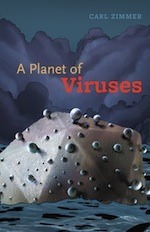 I've posted a batch of autographed, hardback editions of A Planet of Viruses in my Amazon store. You can have your own inscribed copy for ten dollars plus shipping. Click here to order.
I've posted a batch of autographed, hardback editions of A Planet of Viruses in my Amazon store. You can have your own inscribed copy for ten dollars plus shipping. Click here to order.
For those unfamiliar with the book: it's a linked collection of twelve essays on twelve viruses. I use each one to illustrate a broad lesson about viruses in general, such as the fact that they are the most abundant life form on Earth and that they make up a sizable portion of the human genome.
The Washington Post wrote: "In A Planet of Viruses, science writer Carl Zimmer accomplishes in a mere 100 pages what other authors struggle to do in 500: He reshapes our understanding of the hidden realities at the core of everyday existence."
PS: The paperback edition will be coming out this spring.










